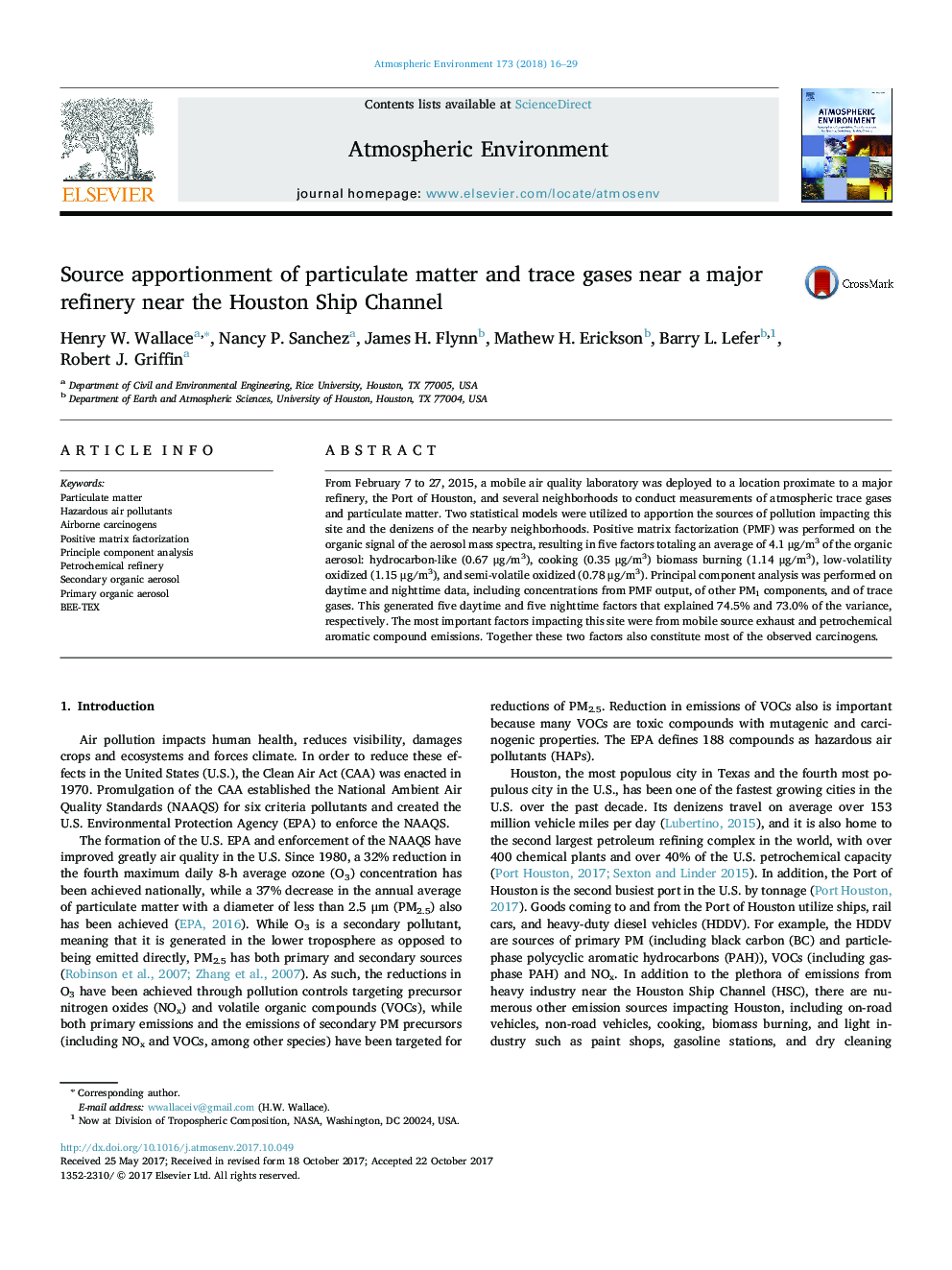| Article ID | Journal | Published Year | Pages | File Type |
|---|---|---|---|---|
| 8864253 | Atmospheric Environment | 2018 | 14 Pages |
Abstract
From February 7 to 27, 2015, a mobile air quality laboratory was deployed to a location proximate to a major refinery, the Port of Houston, and several neighborhoods to conduct measurements of atmospheric trace gases and particulate matter. Two statistical models were utilized to apportion the sources of pollution impacting this site and the denizens of the nearby neighborhoods. Positive matrix factorization (PMF) was performed on the organic signal of the aerosol mass spectra, resulting in five factors totaling an average of 4.1 μg/m3 of the organic aerosol: hydrocarbon-like (0.67 μg/m3), cooking (0.35 μg/m3) biomass burning (1.14 μg/m3), low-volatility oxidized (1.15 μg/m3), and semi-volatile oxidized (0.78 μg/m3). Principal component analysis was performed on daytime and nighttime data, including concentrations from PMF output, of other PM1 components, and of trace gases. This generated five daytime and five nighttime factors that explained 74.5% and 73.0% of the variance, respectively. The most important factors impacting this site were from mobile source exhaust and petrochemical aromatic compound emissions. Together these two factors also constitute most of the observed carcinogens.
Keywords
Related Topics
Physical Sciences and Engineering
Earth and Planetary Sciences
Atmospheric Science
Authors
Henry W. Wallace, Nancy P. Sanchez, James H. Flynn, Mathew H. Erickson, Barry L. Lefer, Robert J. Griffin,
